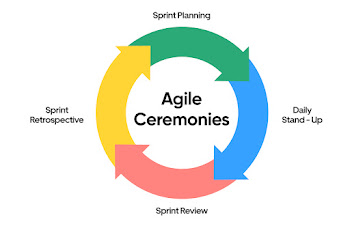Why Agile better than Waterfall?
Waterfall Model:
Waterfall methodology is a linear design process, originating in software development processes. The waterfall development method originates in the manufacturing and construction industries. This model consider as a sequential model that divides software development into pre-defined phases. Each phases must be completed before the next phase can begin with no overlap between the phases. Each phases is designed for performing specific activity during the SDLC phase.
Agile Model:
The Agile methodology is a project management approach for software development that emphasises iterative development, collaboration, continuous improvement, and responsiveness to change. It contrasts with the Waterfall method, which is a more structured and linear approach.
Here is some details of why Agile is often considered a better approach:
Flexibility and Adaptability:
Agile methodologies prioritise continuous adaptation. They break down projects into smaller iterations (sprints) with frequent reviews and opportunities to incorporate feedback. This allows for changes in requirements to be addressed more easily throughout the development process, reducing the risk of building a product that becomes obsolete by the time it's released.
Earlier and More Frequent User Feedback:
Agile emphasises close collaboration with stakeholders and users. Regular feedback loops ensure that the product is aligned with user needs and expectations. Users can test and provide feedback on features early and often, leading to a more user-centric final product.
Reduced Risk of Project Failure:
By continuously testing and incorporating feedback, Agile helps identify and address issues early in the development cycle. This reduces the risk of major problems surfacing later in the project, leading to fewer delays, cost overruns, and a higher chance of project success.
Better Suited for Complex Projects:
Agile thrives in environments with uncertainty and evolving requirements. The iterative nature allows for adjustments as new information or needs arise. This makes Agile a better fit for complex projects where the final product vision might not be entirely clear at the outset.
Improved Team Morale and Motivation:
Agile fosters a collaborative and fast-paced environment. Developers receive frequent feedback and have a sense of ownership over the evolving product, which can lead to higher morale and motivation.
Here's a table summarising the key advantages of Agile over Waterfall:
|
Feature |
Agile |
Waterfall |
|
Flexibility |
Adaptable to
changing requirements. |
Difficult to
make change later. |
|
User Feedback |
Early and
frequent user involvement. |
Limited user
input until late stages. |
|
Risk of project failure |
Lower risk
due to early issue detection. |
Higher risk
due to limited feedback loops. |
|
Suitability for Complex Projects |
Well- suited
for evolving requirements. |
Less suited
for complex projects. |
|
Team Motivation |
Encourages
collaboration and motivation. |
Can lead to
developer disengagement. |
|
Speed |
Usually
delivers more rapidly. |
Slow and take
long time to match requirements. |



Comments
Post a Comment